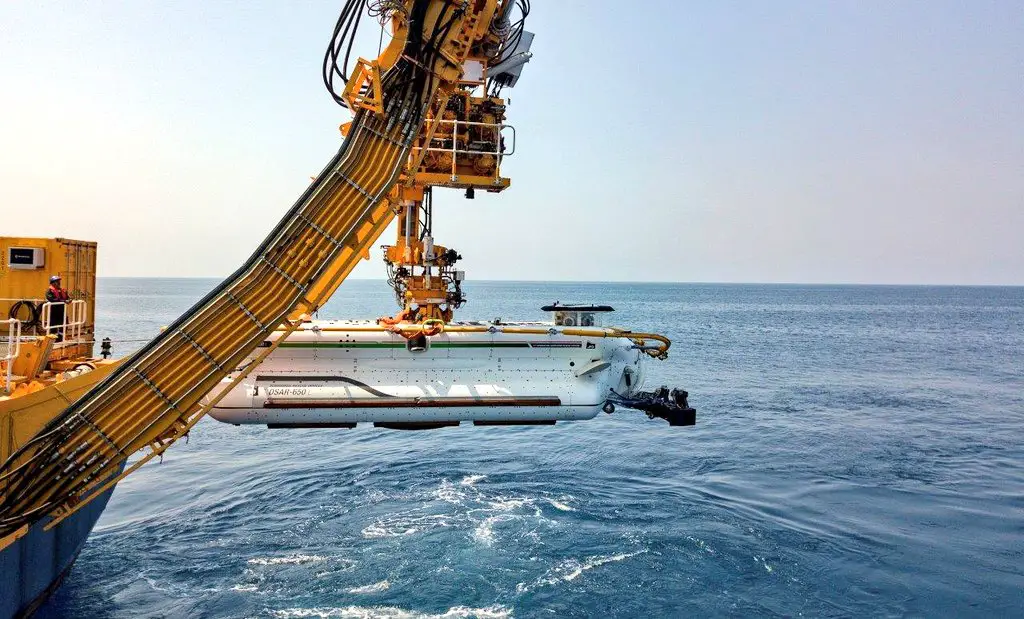In order to boost India's underwater capabilities, the Indian Navy has announced on Wednesday, June 05, that one of its new deep-submergence rescue vehicles (DSRVs) had successfully conducted live-mating exercises with a submarine.
In order to boost India's underwater capabilities, the Indian Navy has announced on Wednesday, June 05, that one of its new deep-submergence rescue vehicles (DSRVs) had successfully conducted live-mating exercises with a submarine.
 One DSRV being launched the water from an Indian supply vessel (Picture Source: Indian Navy)
One DSRV being launched the water from an Indian supply vessel (Picture Source: Indian Navy)
DSRVs are small submarines that are specially designed to dive to greater depths than most military submarines and rescue stranded crews in the event of an emergency. In December last year, the Indian Navy had inducted two DSRVs, supplied by UK-based company James Fisher Defence (JFD).
Providing details about the exercise, the Indian Navy revealed the test of the DSRV was carried out on June 2 near Vizag and involved the transfer of personnel from INS Sindhudhvaj, an in-service Kilo class submarine purchased from Russia. The INS Sindhudhvaj simulated a submarine in distress from which the DSRV was able to transfer stranded personnel successfully.
The DSRV is equipped with sophisticated radar and a remotely operated vehicle (ROV), which extends the vessel's operating depth and can be used for clearing debris and obstructions. The DSRV has a crew of three personnel and can rescue up to 14 personnel from a stranded submarine at a time.
The DSRV, being smaller than military submarines, can be transported by specially equipped ships or the Indian Air Force's heavy-lift aircraft, such as the C-17, to the vicinity of a submarine emergency. During the trial, the DSRV dived to a depth of 666 metres, which was described by the Indian Navy as a record for the “deepest submergence by a manned vessel” in Indian waters.







